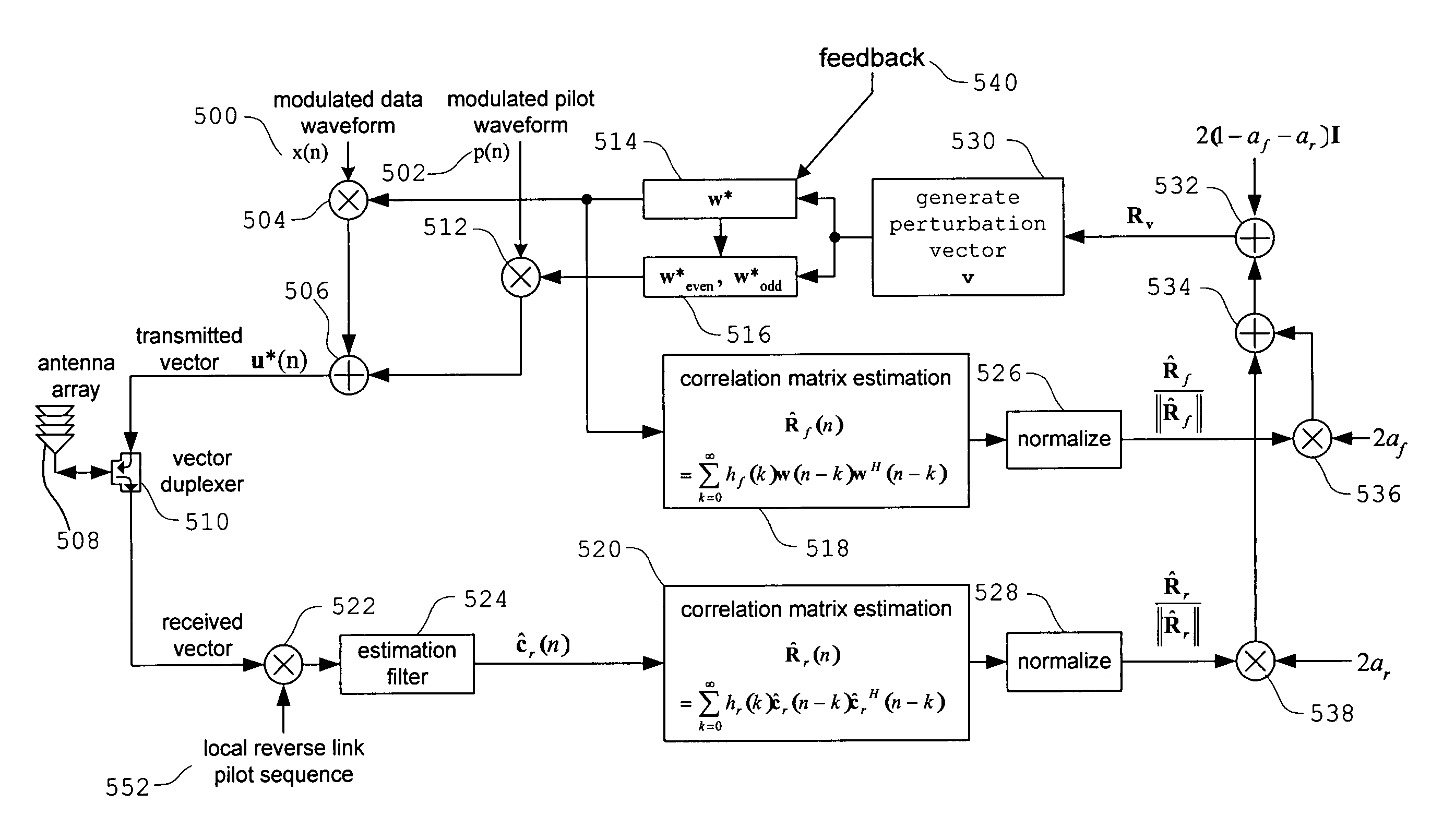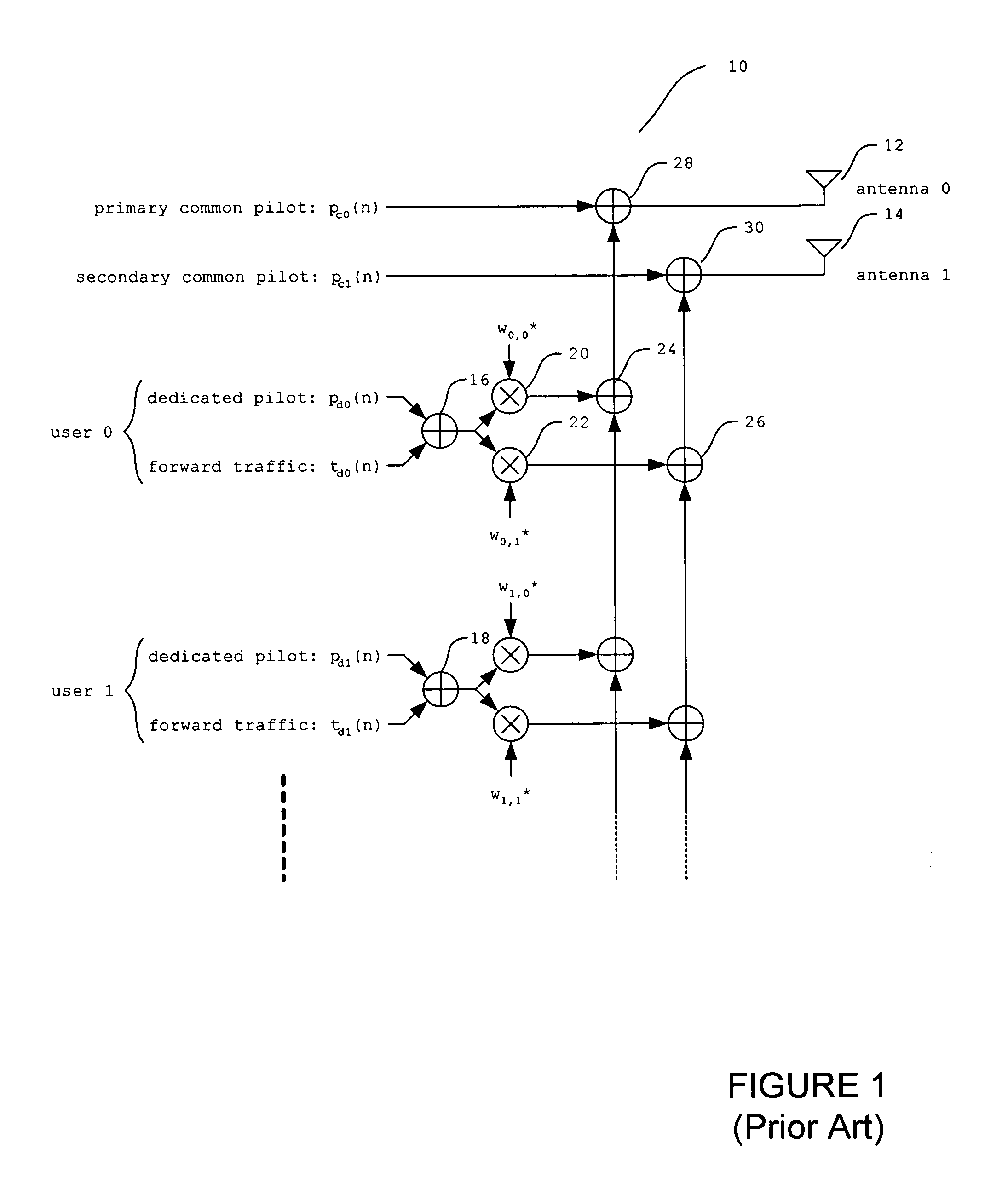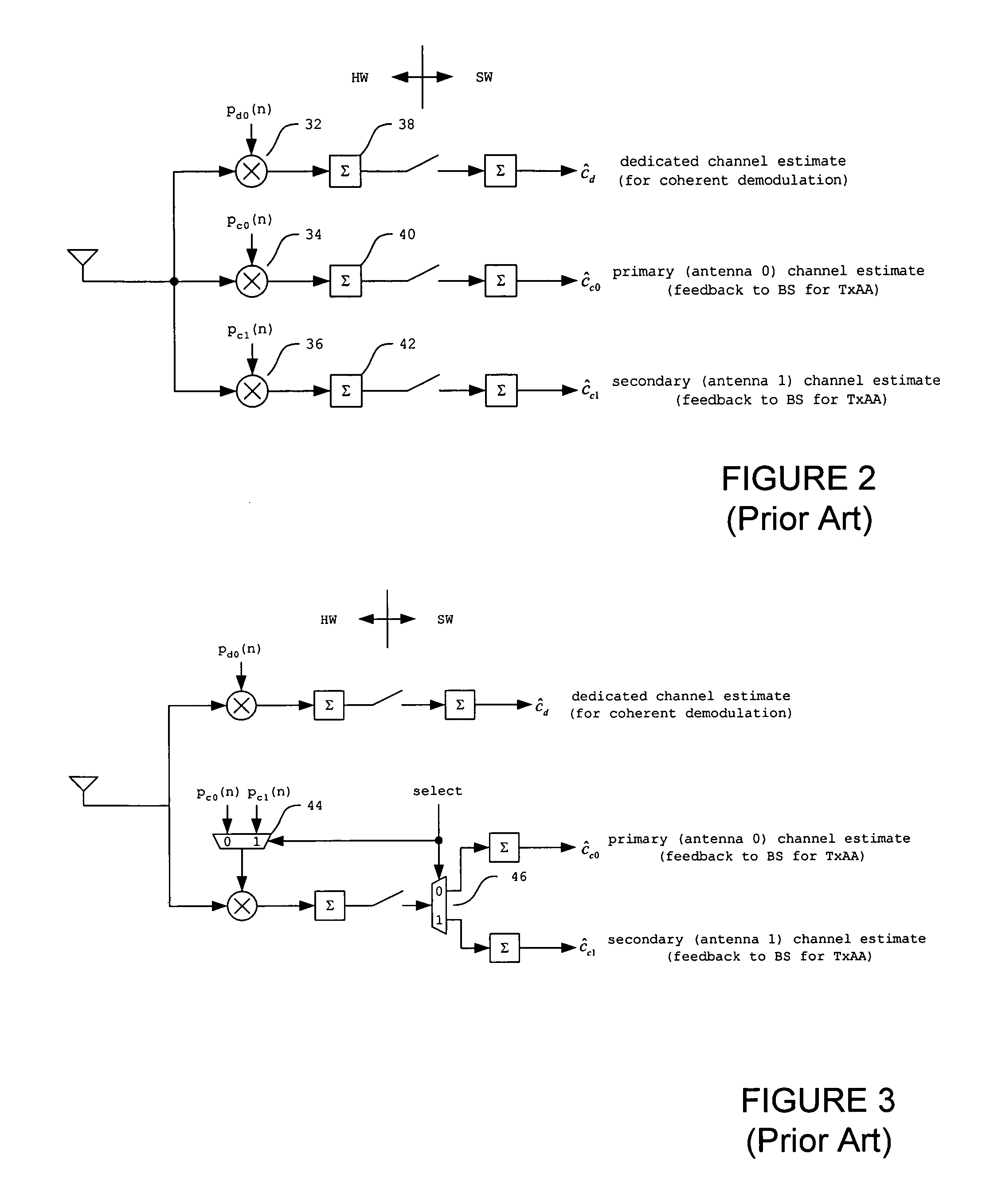Method and apparatus for improving transmit antenna weight tracking using channel correlations in a wireless communication system
- Summary
- Abstract
- Description
- Claims
- Application Information
AI Technical Summary
Benefits of technology
Problems solved by technology
Method used
Image
Examples
first embodiment
Channel Autocorrelation Tracking Technique—A First Embodiment
[0152]The first embodiment of the channel autocorrelation tracking technique of the present invention extracts a coarse gradient estimate by utilizing a correlated perturbation vector probing technique, where the perturbation vector is generated with a autocorrelation derived from an estimate of the channel vector autocorrelation matrix. The autocorrelation with which the perturbation vector is generated is selected such that the stronger subspaces of the channel autocorrelation are emphasized in the perturbation probing and update. Specifically, the first embodiment utilizes a TxAA algorithm to generate perturbation vectors by applying perturbation vector autocorrelation matrix estimations using both forward and reverse channel estimators. The perturbation vectors are utilized by the TxAA algorithm to generate weight vectors. An exemplary TxAA algorithm is described above with reference to the TxAA weighting embodiment. O...
second embodiment
Channel Autocorrelation Tracking Technique—A Second Embodiment
[0171]The second embodiment of the channel autocorrelation tracking technique of the present invention extracts a coarse gradient estimate in a similar manner to the first embodiment. Specifically, the second embodiment utilizes eigendecompositions to generate non-linear functions of the autocorrelation matrix. These non-linear functions can provide improved tracking by “expanding” and “compressing” the tracking rate within the different subspaces of the autocorrelation matrix estimate. Expanding the tracking rate is defined as emphasizing stronger eigenmodes and de-emphasizes weaker eigenmodes. Compressing the tracking rate is defined as bringing the tracking rates of strong and weak eigenmodes closer.
[0172]As described further below, a parameter p, applied as a matrix exponent, determines the degree of expansion or compression of the tracking rate. In the limit when p=0, the autocorrelation matrix is not used to assist ...
PUM
 Login to View More
Login to View More Abstract
Description
Claims
Application Information
 Login to View More
Login to View More - R&D
- Intellectual Property
- Life Sciences
- Materials
- Tech Scout
- Unparalleled Data Quality
- Higher Quality Content
- 60% Fewer Hallucinations
Browse by: Latest US Patents, China's latest patents, Technical Efficacy Thesaurus, Application Domain, Technology Topic, Popular Technical Reports.
© 2025 PatSnap. All rights reserved.Legal|Privacy policy|Modern Slavery Act Transparency Statement|Sitemap|About US| Contact US: help@patsnap.com



